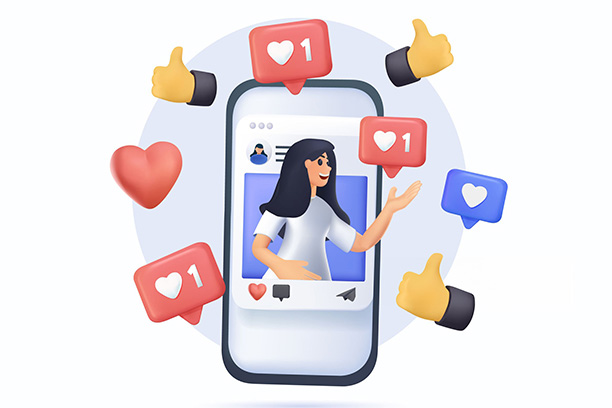The Death of Traditional Influencers? Why Virtual Influencers Are Booming

In the ever-evolving world of social media, a new trend is taking over: virtual influencers. These digitally created personalities—backed by AI, CGI, and cutting-edge tech—are gaining millions of followers, securing brand deals, and even appearing in magazines.
But does this mean the end of traditional influencers? Let’s explore why virtual influencers are booming and what this means for the future of digital marketing.
Who Are Virtual Influencers?
Virtual influencers are computer-generated characters designed to mimic real-life influencers. They post curated content, engage with followers, and collaborate with major brands—all without being real humans. Some of the most famous virtual influencers include:
- Lil Miquela (3M+ followers) – A CGI model who has worked with Prada, Calvin Klein, and even “dated” real-life celebrities.
- Noonoouri – A fashion-forward virtual muse who has partnered with Dior, Versace, and Kim Kardashian’s SKIMS.
- Shudu – The world’s first digital supermodel, created by a photographer, now signed to a modeling agency.
These avatars are always camera-ready, never age, and can be customized to fit any brand’s aesthetic—making them a marketer’s dream.
Why Are Virtual Influencers So Popular?
- Perfectly Controlled Brand Image
Unlike human influencers, virtual ones don’t have scandals, bad PR, or unpredictable behavior. Brands have full control over their messaging, appearance, and partnerships.
- Cost-Effective & Always Available
No flights, no makeup artists, no scheduling conflicts—virtual influencers can be in multiple places at once, reducing costs and logistical headaches.
- Hyper-Customizable & Innovative
Want an influencer who’s part-robot, part-fairy, or entirely futuristic? With virtual influencers, the creative possibilities are endless.
- Appeal to Gen Z & Tech-Savvy Audiences
Younger audiences, raised on video games and VR, are more accepting of digital personas. Virtual influencers feel fresh, futuristic, and engaging.
- 24/7 Content Production
No fatigue, no breaks—just nonstop content creation optimized for engagement.
Will Virtual Influencers Replace Human Influencers?
Not entirely. While virtual influencers offer many advantages, human connection still matters. People follow influencers for authenticity, relatability, and real-life experiences—something AI can’t fully replicate (yet).
However, the rise of virtual influencers does signal a shift:
✅ Brands will diversify – More companies will mix human and virtual influencers for different campaigns.
✅ Niche markets will expand – Virtual influencers can cater to fantasy, sci-fi, or hyper-stylized aesthetics that real people can’t.
✅ Ethical concerns will arise – Issues like unrealistic beauty standards, AI ethics, and data privacy will need addressing.
The Future: A Hybrid Influencer Landscape
Rather than a complete takeover, we’re likely heading toward a blended ecosystem where virtual and human influencers coexist. Some brands may prefer the reliability of digital avatars, while others will stick with authentic human voices.
One thing’s for sure: Virtual influencers are here to stay, and their influence is only growing.
Let's Try! Get Free Quote
Get Started Today
Want to transform your web vision into reality? Contact us today to explore your development needs. Let's create something extraordinary together.